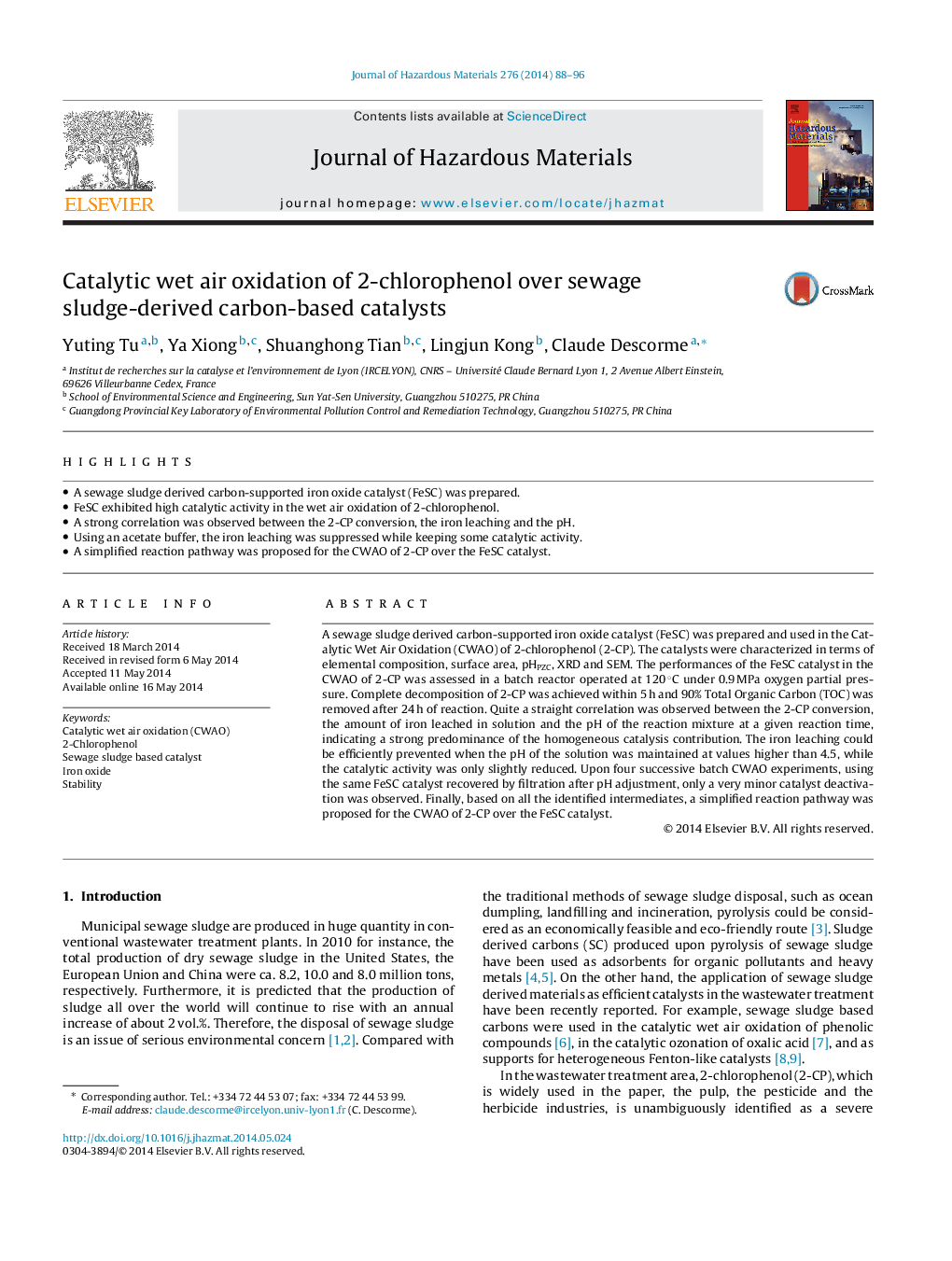| Article ID | Journal | Published Year | Pages | File Type |
|---|---|---|---|---|
| 576823 | Journal of Hazardous Materials | 2014 | 9 Pages |
Abstract
A sewage sludge derived carbon-supported iron oxide catalyst (FeSC) was prepared and used in the Catalytic Wet Air Oxidation (CWAO) of 2-chlorophenol (2-CP). The catalysts were characterized in terms of elemental composition, surface area, pHPZC, XRD and SEM. The performances of the FeSC catalyst in the CWAO of 2-CP was assessed in a batch reactor operated at 120 °C under 0.9 MPa oxygen partial pressure. Complete decomposition of 2-CP was achieved within 5 h and 90% Total Organic Carbon (TOC) was removed after 24 h of reaction. Quite a straight correlation was observed between the 2-CP conversion, the amount of iron leached in solution and the pH of the reaction mixture at a given reaction time, indicating a strong predominance of the homogeneous catalysis contribution. The iron leaching could be efficiently prevented when the pH of the solution was maintained at values higher than 4.5, while the catalytic activity was only slightly reduced. Upon four successive batch CWAO experiments, using the same FeSC catalyst recovered by filtration after pH adjustment, only a very minor catalyst deactivation was observed. Finally, based on all the identified intermediates, a simplified reaction pathway was proposed for the CWAO of 2-CP over the FeSC catalyst.
Related Topics
Physical Sciences and Engineering
Chemical Engineering
Chemical Health and Safety
Authors
Yuting Tu, Ya Xiong, Shuanghong Tian, Lingjun Kong, Claude Descorme,
